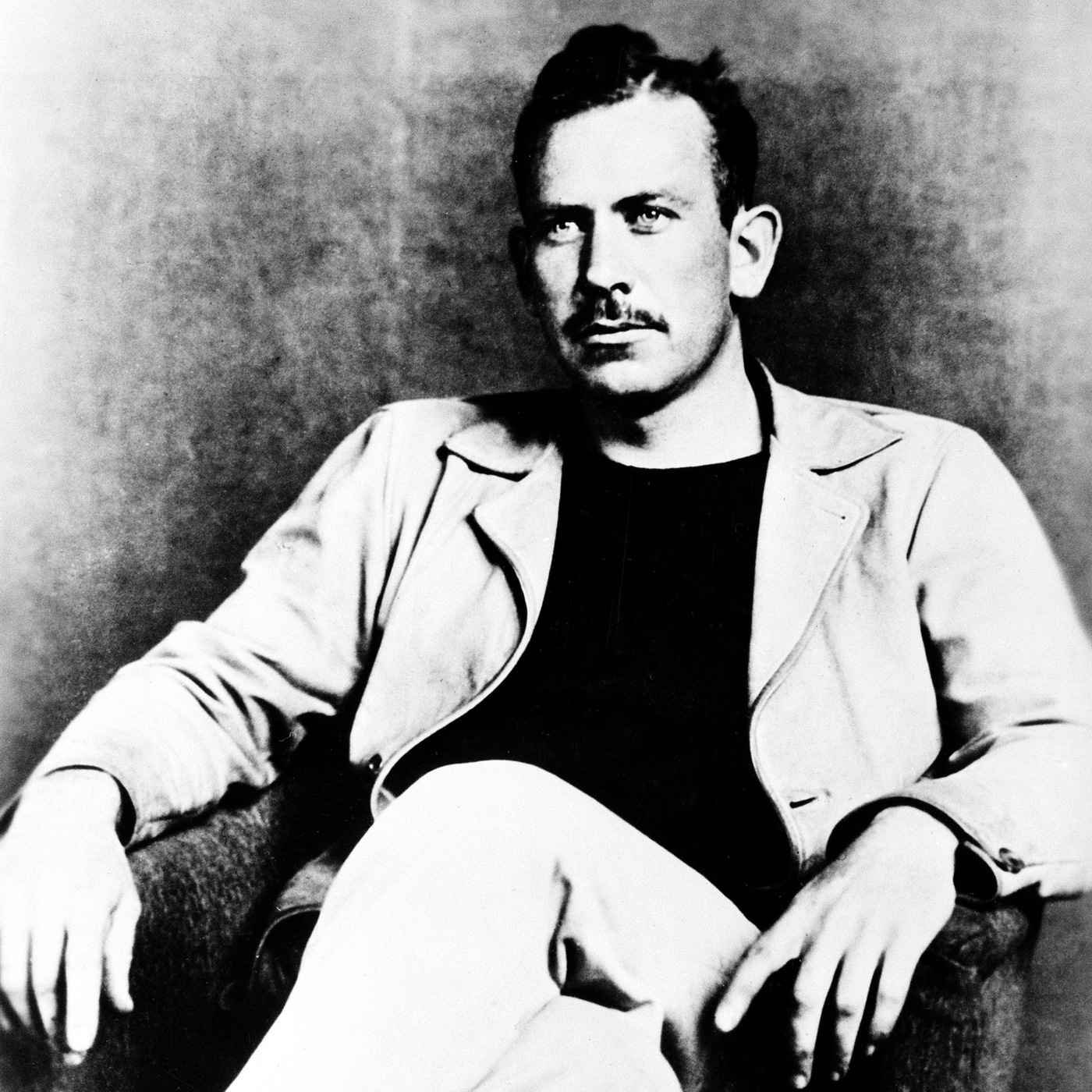
A Young John Steinbeck’s Unpublished Werewolf Novel Isn’t Going To Print

American author John Steinbeck, winner of the 1940 Pulitzer Prize for his novel The Grapes of Wrath and 1962 Nobel Prize in Literature laureate, in an undated photo. An early, unpublished Steinbeck novel concerns brutal murders and a werewolf.
AP
hide caption
toggle caption
AP

American author John Steinbeck, winner of the 1940 Pulitzer Prize for his novel The Grapes of Wrath and 1962 Nobel Prize in Literature laureate, in an undated photo. An early, unpublished Steinbeck novel concerns brutal murders and a werewolf.
AP
A dog is found murdered at the hunting club in Cone City, a fictional locale on the central California coast, under the light of a full moon. Then the club’s Swedish cook is killed. More deaths follow.
New in town, cub reporter “Egg” Waters narrates the story of a series of brutal murders that appear to be the work of a werewolf; an amateur sleuth on the case develops a theory of crime-solving based on the detective fiction he’s read.
So goes the plot of Murder at Full Moon, an unpublished novel by literary giant John Steinbeck, who received the 1962 Nobel Prize in Literature and is better known for his tales about life in the American West during the Great Depression.

John Steinbeck receiving the 1962 Nobel Prize in Literature from King Gustav of Sweden, in Stockholm.
AP
hide caption
toggle caption
AP

John Steinbeck receiving the 1962 Nobel Prize in Literature from King Gustav of Sweden, in Stockholm.
AP
“It’s often dismissed as a piece of juvenalia, not something to be taken seriously,” said Gavin Jones, a professor of American literature at Stanford University, who has read the novel and shared details with NPR.
“I was really surprised to discover that it was this complete typescript. It was not a fragment or some incoherent, sort of aborted project, but was a really complicated, interesting hybrid novel that lies somewhere between a murder mystery, a detective novel and a werewolf story,” Jones said.
Steinbeck wrote the 233-page novel under a pseudonym in 1930, before he published such works as Of Mice and Men and The Grapes of Wrath that would make him famous. Now Jones, who just finished researching and writing a book on Steinbeck, is urging the late writer’s estate to publish the novel for anyone to read, as was first reported in The Guardian.
“Why wouldn’t we want a complete novel by one of the best-known, most widely read American writers of the 20th Century?” Jones asked. “It gives us a kind of Steinbeck we never had.”
But like the lycanthrope at the heart of its story, Steinbeck’s unpublished novel is unlikely to see the light of day.
McIntosh and Otis, the literary agency in charge of Steinbeck’s estate, told the newspaper that since Steinbeck chose not to publish the novel during his lifetime, it would not send the book to print.
In a separate statement, the company said it was wrong to consider Murder at Full Moon a “lost work” since academics have been able to study it for years. (The novel, written under the pseudonym Peter Pym, is located at the Harry Ransom Center at the University of Texas at Austin.)
The agency added that there have been Steinbeck works published posthumously “with his directions and the careful consideration of the Estate,” including Journal of a Novel, A Life in Letters, The Acts of King Arthur and His Noble Knights, and Working Days.
Still Jones — and likely scores of Steinbeck fans — want to see the story in print and believe it could help shed new light on his work.
For example, Jones said the novel shows the influence of Edgar Allan Poe on Steinbeck and is an early version of the California noir detective fiction that would become popular in the decades to follow.
More broadly, Jones said, it highlights Steinbeck’s interest in exploring how humans can transform into other states of being. The theme also appeared in a Steinbeck short story in which a woman morphs into a plant as well as in Sea of Cortez, a kind of travel narrative in which he contemplates how humans can adapt to be more “in sync” with nature, Jones said.
Jones suggested that it’s unclear to him if Steinbeck wanted the novel to remain unpublished and, even if he did, whether that wish would outweigh the cultural benefit of making it available to the public.
“Emily Dickinson didn’t publish very many of her poems during her lifetime either. So are the people who published Emily Dickinson’s poems exploiting Emily Dickinson? I don’t think so,” he said. “They’re giving readers the ability to decide for themselves on the merits of a work of literature.”
Stay connected with us on social media platform for instant update click here to join our Twitter, & Facebook
We are now on Telegram. Click here to join our channel (@TechiUpdate) and stay updated with the latest Technology headlines.
For all the latest Entertainment News Click Here
For the latest news and updates, follow us on Google News.

